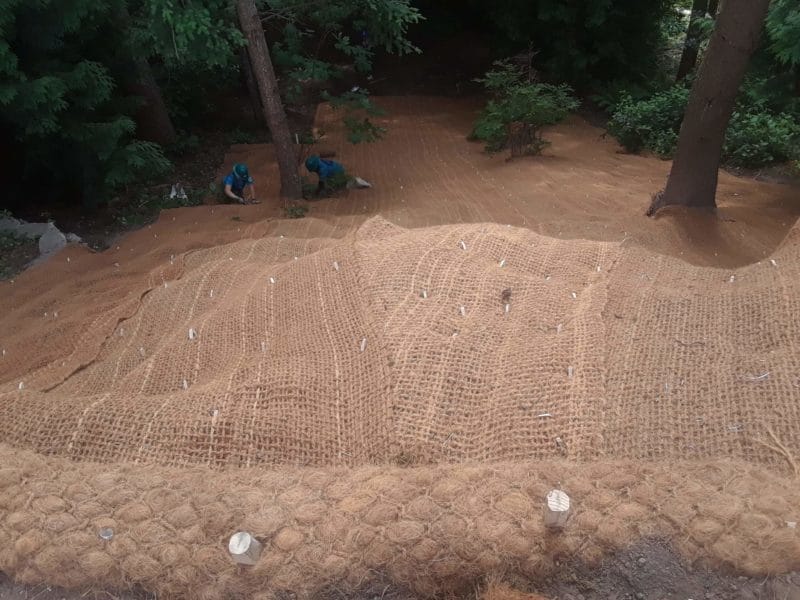It is the EarthCorps tradition to send volunteers to different parts of the state of Washington, executing different projects to have varying experience of the city’s ecological settings and culture. Adnane crew, which is one of the seven crews formed during the EarthCorps retreat, was saddled with the responsibility of executing an erosion control installation project at Edmonds.

The city of Edmonds is in Snohomish County, Washington, the United States, named after George Franklin Edmunds, a U.S. Senator from Vermont. It is in the southwestern part of the county, facing Puget Sound and the Olympic Mountains to the west. The city is part of the Seattle metropolitan area and is located 15 miles (24 km) north of Seattle and 18 miles (29 km) southwest of Everett.
After the usual early morning circle up at EarthCorps office that starts at 7:30 in the morning, each crew departs to their place of primary assignment. Our task, as usual, is to first locate project site through the help of the crew’s navigator, using google map. This Monday morning was no different, as we went on the highway in search of Burton’s property which shares a boundary with the Hickman Park at Edmunds.
On getting to the site, the Project Manager, Bill, briefly did an overview of the project. We were made to understand that the erosion was initially caused by foot, bike traffic, and later water. Which resulted in making the site to erode and cause loss of vegetation.
To restore this precious land from erosion, we must stabilise the steep slope with coir fabric first, and then return in late fall to plant the site with different native species that will help in stimulating the soil.
Abby and I dug a not too wide trench where coir log will later rest. Robyn and Emma attach the 700/900 coir fabric at the top of the slope and rolling it uphill, Adnane and Abby then install 12-inch wood eco stakes every 3 feet, we filled the trench partially with soil and started rolling the fabric downhill. One of the things we are conscious of is making the fabric has close contact with the soil to ensure its effectiveness in controlling erosion.
As we roll downhill, we make sure the coir fabric was staked down to the earth using 12-inch wood eco stakes, 2 inches in from the edges and every 3 feet in a diamond pattern. More so, we carefully placed the coir log in the shallow trench created at the top of the fabric and once the log is in place, I filled the trench with soil.
To have strong, tightly packed logs, we joined the ends of each log together with coir twine and use two by two by twenty-four-inch wooden stakes within 6 inches of each end. Five stakes were totally evenly spaced across the logs.
It was an educating and fascinating experience throughout the project execution. The team spirit is one that can’t be beaten because we so much understand each other and always work together to achieving the desired result.
Bill is a man with years of experience and working with him is a great privilege. We encountered different challenges and with his help, we were able to work out probable solutions. I would love to continuously work with this environmental guru so as to benefit more from his wealth of experience.
I wished to be a part of the crew that will carefully plant this area sometime around late fall. Nothing is more satisfying than being a part of an organisation that cherishes our environment by managing and restoring its lost value and also building global leadership in the process.
By Alabede Surajdeen (An Environmental Restoration International Exchange Fellow at Seattle, Washington, USA; @BabsSuraj; alabedekayode@gmail.com)
